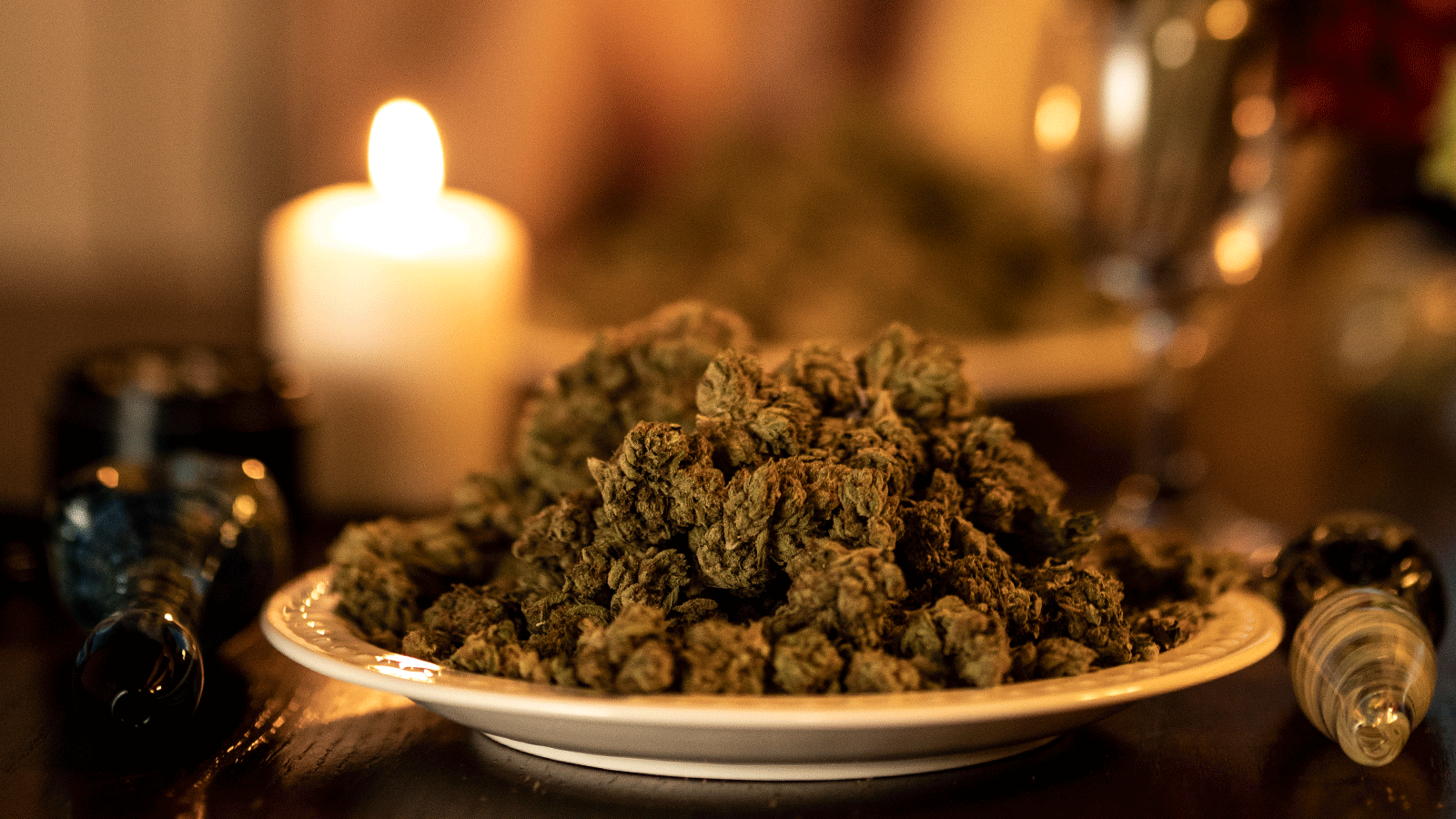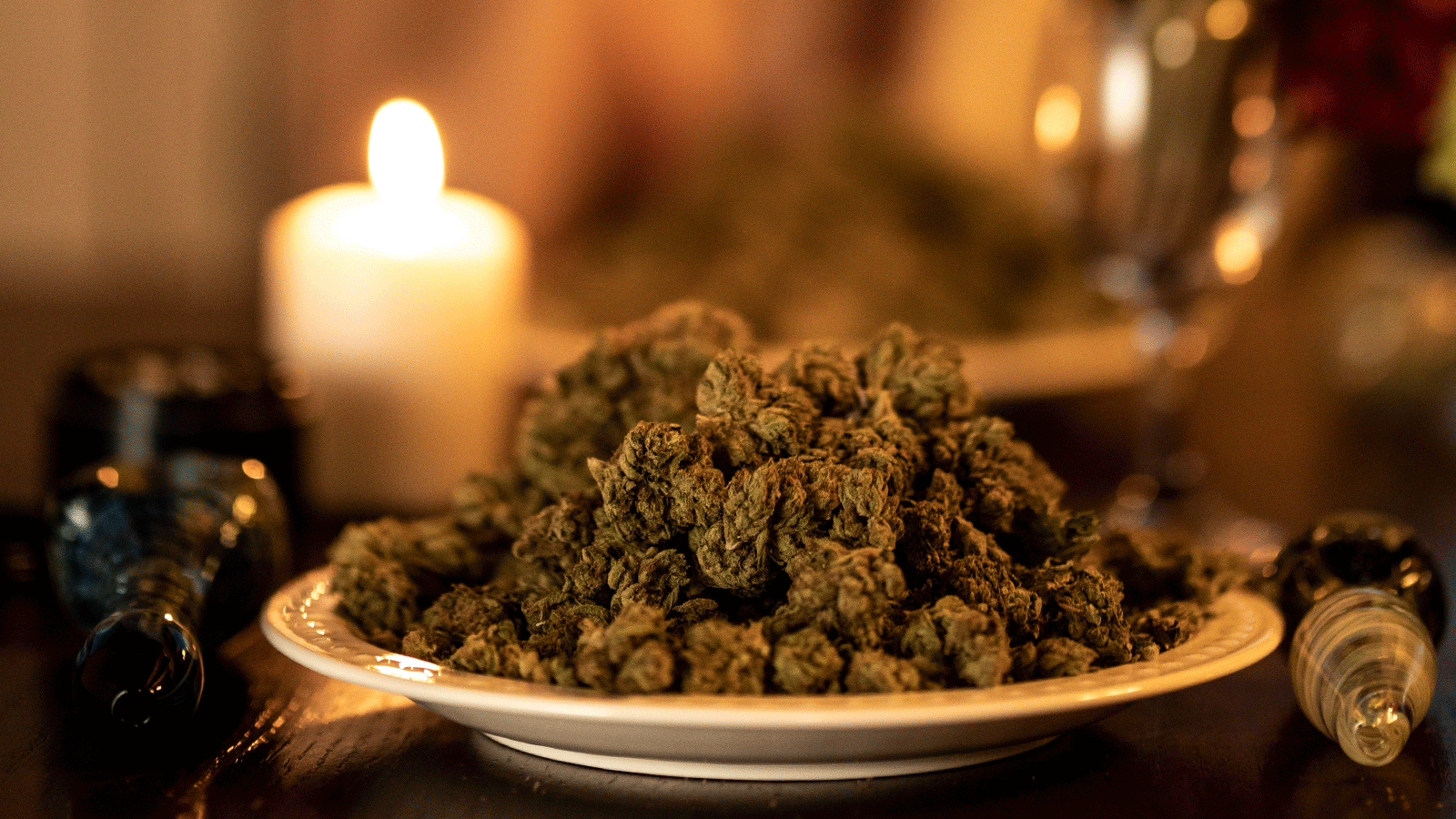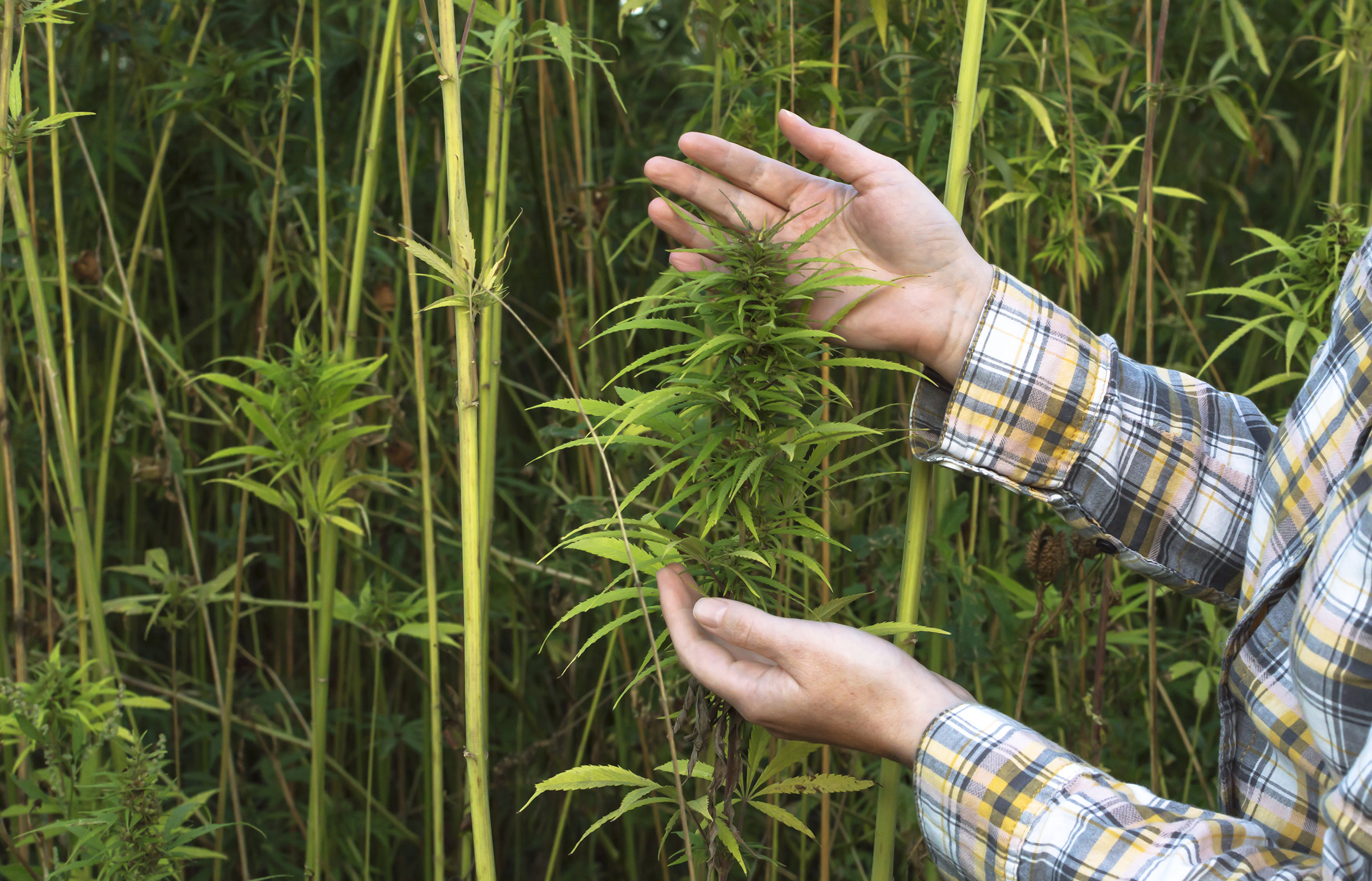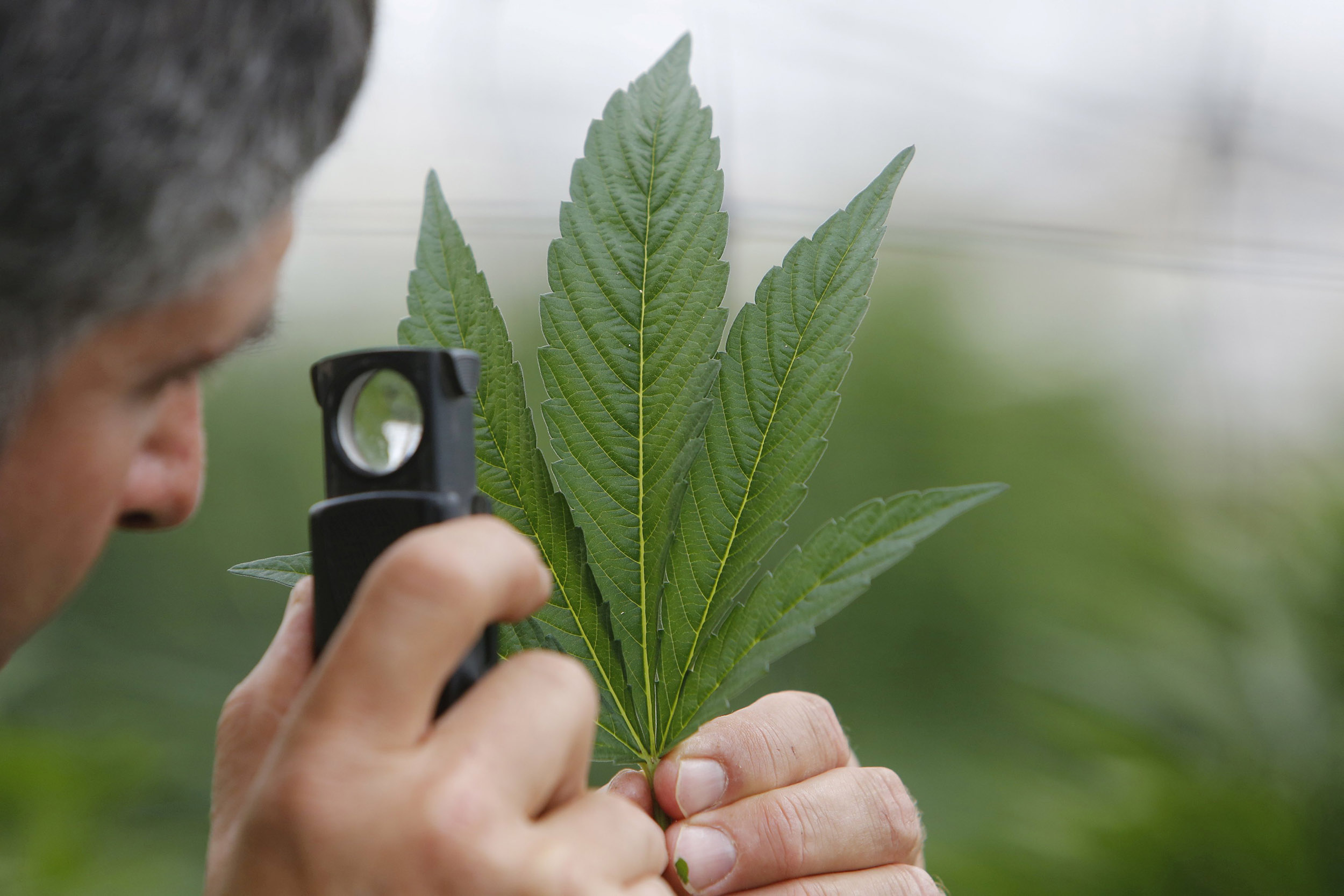
Did you know that, if you came into possession of $100,000, that you could blow it all on a vape? Did you know that, if you wanted to, you could grind your weed in a grinder plated in 24karat gold? That you could smoke pot out of a $13,000 stainless steel bong designed by one of Canada’s most sought-after architects?
Goodbye smoke shop. Hello Barneys.
All is possible in the age of Stoner Fancy — a visual identity for cannabis that marries traditional cannabis products like pipes and bongs with modern design and luxury marketing — as cannabis culture goes from its greened-out, hot-couch-guy basement aesthetic to something that is more marketable, viral, and aggressively palatable to the aspiring lifestyle influencer class discovering that cannabis can be chic and cool.
“A part of the market is definitely going there,” Sarah Remesch told Weedmaps News. Remesch is a marketer who wears many different hats. She’s the founder of a new CBD company called New Highs. She also owns an ad agency called 270M, and in 2017 founded Viride, a cannabis lifestyle magazine.
“As, especially in the U.S., we go further mainstream and the stigma starts to slow down around the plan, then you’re going to see the consumers that maybe are trying out new cannabis products, and they’re going to want something that fits within their lifestyle, and if that is more luxury and high-end, that’s what they’re going to be shopping for.”
One sign cannabis culture is coming into its own: Accessories costing thousands of dollars are designed and marketed toward affluent tokers.
Increasingly, the cannabis industry is working to appeal to the 21st century purchaser: a minimalist lifestyle aesthetic.
Remesch herself has leveraged these aesthetic principles to promote cannabis culture.
“A new age is dawning on one of the oldest indulgences,” the Viride tagline reads. “We strive to reach new highs.” A bottle of New Highs CBD comes with a simple, sans-serif font on a flat, white background. So far, this kind of design is common in the cannabis world.
The Rise of Luxury-Priced Bongs and Vapes
“It’s a business that seems long overdue,” wrote Jenni Avens of the new stoner aesthetic in Quartz. “Stoners — whether they consider themselves aesthetes or not — have a tendency to obsessively appreciate the details, whether in the electric melon shade of an evening sky, a cascading guitar solo, or the cool, tongue-coating taste of a fresh mint milkshake.”
But design in the cannabis world had been criticized as being somewhat lacking, if not for its output, then for its creativity. In 2017, Alan Gertner and Alex Josephson were criticized by some within the cannabis and glass-blowing communities after Gertner criticized the industry’s design sensibility, saying “there’s basically only ever been one pipe, only ever been one bong. It’s like, you can smoke out of this small glass dragon, or our larger-format glass dragon.” Those comments drew scorn from several people within the glassmaker community, whose work Gertner had also called “unthoughtful” at the time.
Vaporizers with the sticker price of a luxury car? Grinders going for $1,500? These are two extreme examples of marijuana accessories positioned as luxury goods.
If that kind of comment earned them some scorn at the time, it could be argued that the market’s rapid and recent adoption of a new, cleaner aesthetic — expressed in extreme forms like $100,000 vaporizers and $1,500 grinders, but also in more approachable and consumer-friendly items like the containers available from Toronto-based cannabis retailer Milkweed — has given their comments a bit more validity. “Crafted with clean lines, fashioned out of materials that endure,” read Milkweed’s website. “It’s a contemporary cannabis experience — a ritual, for today and tomorrow.”
Marijuana, Meet Minimalism
It’s the “contemporary cannabis experience” in the industry’s infancy that is being redefined. The trend that seems to be dominating the cannabis world at the moment, at least aesthetically, is the adoption of a form of stoner minimalism: simple pipes, clean lines, simple color palettes.
Now that weed is legal in more places, its marketing falls increasingly in line with the wider industry trends — and, as Tatum Dooley writes in the online magazine Real Life, minimalism-as-brand-aesthetic has emerged as a popular form of marketing with the convenient ability to conceal its own motives.
“Minimalism is both an easy enough aesthetic to obtain — a ‘goth juicer’ would be much harder to find than a ‘minimalist’ one — and one that suggests an ethos that is appealingly at odds with its dubious function: marketing,” she wrote in Real Life. Minimalism, as an aesthetic, is both easy to look at and enjoy, in part because it feels so simple and restrained, while also giving the appearance of luxury. “It signals virtue,” Dooley wrote, “while suggesting that beauty and the good are one and the same.” It is as much a philosophy as it is a design principle, which has helped propel it to prominence within the advertising industry in recent years.
Minimalism in the cannabis industry is one of those things that, once you start seeing it, is everywhere. It’s in the Tweed billboard over Toronto’s Yonge-Dundas Square, which just read “Hi.”; it is in the simple, clean-lines branding of Dosist, a vape company; it is even in the Ontario government’s own cannabis retail brand, which channels minimalism to the extreme, despite a decidedly non-minimalist taxpayer cost of $650,000 Canadian dollars (more than $492,000 U.S. dollars as of Feb. 21, 2019).
Stoner Culture Replaced by Lifestyle Branding
Some, like Vice writer Manisha Krishnan, lament and poke fun at the rise of such luxury-priced bongs, grinders, and vaporizers.
rip stoner culture lmao pic.twitter.com/q8x7y3j1DZ
— 𝐦𝐚𝐧𝐢𝐬𝐡𝐚 𝐤𝐫𝐢𝐬𝐡𝐧𝐚𝐧 (@ManishaKrishnan) October 17, 2018
But Remesch sees plenty of social benefits in the old stoner aesthetic dying.
“I’m a little tired of everyone thinking if you’re using cannabis, you’re lazy, or you are a stoner. I think the plant can be used for a ton of different reasons, and for all different types of people, and not just that one group that, historically, has been tied to what it looks like to be just a smoker,” Remesch said.
Proponents of this look and feel, like Remesch, see it as more democratic. She pointed to marijuana’s historical ties to minorities and legality, both stigmatized by “Reefer Madness” and the war on drugs, as to the negative associations unfairly placed on consumers of all types. “I don’t think anyone wants to feel like they’re using cannabis and people are going to look at them like they’re degenerates.”
But she admits that this comes with limits. “I think [it’s] important to break away from this ‘it looks great on Instagram, let me buy it,’ idea,” she said. “There aren’t only white millennials using Instagram, I think that’s inaccurate. … At the end of the day, we don’t look at just that community. The product can be involved in any community, really.”















